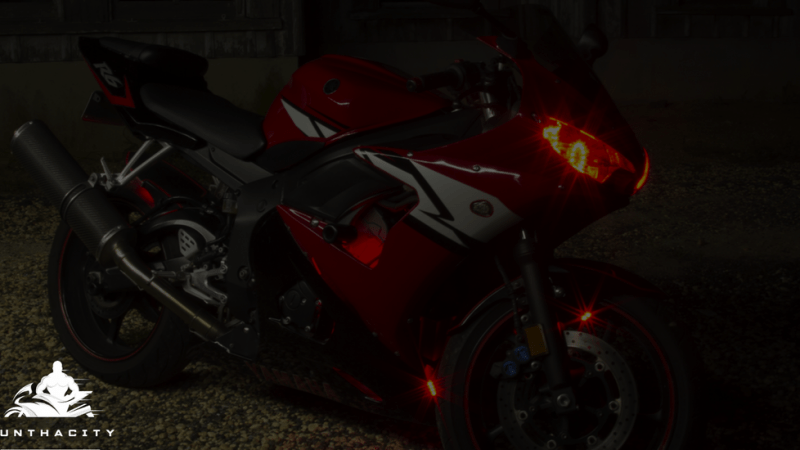Viking Moto Motorcycle Backpack Review
Let’s all agree that the biggest problem with our bikes being daily transportation is the lack of hauling capacity.
So, just as in our scholastic days, backpacks to the rescue! But not just any backpack will do. We’re out in the elements, we’re hauling heavier stuff than a few books, and of course, we don’t want to look like a vagabond. That’s where awesome designs like the Viking Bag’s Motorcycle Backpack shine.
This isn’t your high school backpack, oh no. This Cordura backpack features a modern classic look with leather trim and an understated aesthetic that will match your jacket and your bike, no matter what type of bike you like to ride.
Let’s take a closer look at this awesome bag, and how it can make your daily rides so much cooler.
Shot and Edited by Shaun Maddox
https://shaunmaddox.com/
https://www.instagram.com/shaunmaddox/
Construction
As I said, this backpack is made of Cordura, a modern marvel of material sciences that fits comfortably on your body, while not being a floppy, frail backpack. With dimensions of 18.5”x12.5”x5”, you can carry groceries, personal items, or personal items with ease and comfort no other bag can offer.
Need more organization, or to haul some electronics with you? Well, Viking’s completely onboard with 21st-century life, including a laptop sleeve and stretchy, sewn in pockets for organizing your styluses, connection cords, your phone, and anything else delicate and vital you may need to carry.
That’s not even the coolest thing this bag can do. We all know how important our helmet is for safety, but when we get off our bike, it becomes a cumbersome nuisance to carry around or somehow safely secure to our bike. With this Viking bag, that’s not an issue, thanks to the stretchy helmet lining which can hold pretty much any helmet of any size no problem.
Gone are any excuses, whatsoever, to forego your helmet. You know who you are!
The Feel
I took one of these out for a day ride, that is about 6 hours round trip, to go shopping in another area (I usually wouldn’t, but it’s a good field test for gear like this). By the time I reached my destination, I almost forgot this bag was even attached to me, and that was with a heavy laptop and backup battery in my bag.
I did, however, notice that as I took the bag off when going into a restaurant, that my shirt was a bit damp, as I’d sweat from where it blocked air flow to an extent. However, having had other bags leave the back of my shirt completely soaked through, I’d call this a considerable improvement in that department. Given this bag is weatherized, it kind of can’t have the airflow of something mesh, and I’d rather sweat a tiny bit while having my stuff protected from the elements.
What really caught my attention was the lack of soreness or discomfort across my shoulders, neck and upper back. I’m a broad-shouldered fellow, which means most backpacks with any weight, tend to tug on muscles and leave me sore or even numb – the broad design of the straps both across the shoulders and waist, didn’t cause that problem at all.
Pros and Cons
Pros
- This is an attractive bag that doesn’t scream “hobo” or “kid”, with a professional yet casual aesthetic that matches any jacket well enough.
- It’s weatherized, and will protect everything with gusto.
- It’s very comfortable, and the strap designs don’t cause soreness, discomfort or circulation problems.
- I can carry my electronics in an organized fashion – this modern thinking is lost on a lot of biking gear companies.
- The helmet lining does the biking community two great services by making our helmets no longer a nuisance, and eliminating any excuses for anyone to foolishly leave their helmets behind.
Cons
- Being weatherized, you will sweat a little bit, it can’t be helped.
- While attractive, the black may not be everyone’s taste.
- I know a few hefty guys who might find the fit of this bag, adjustable as it is, to be a bit precarious.
ADDITIONAL DETAILS
- Heavy duty Cardura Construction.
- Reflective piping for additional night time visibility.
- Built in helmet hood.
- Fits most 15″ laptops in padded compartment.
- Detailed organizer for your keys, wallet and other small items.
- Protective eyewear pocket.
- Duraflex® buckles throughout for added strength.
- Audio Ready.
- Height and width adjustable sternum strap.
- Aerodynamic molded body.
Conclusion
I like this bag. It’s not perfect, and I can see some room for improvement in variety of color schemes as well as a bit more adjustability in the straps for bigger people. I’d also like to see another model that’s stretchier, for if I have more stuff to haul back.
Nonetheless, this is a nice bag, and if you ride your bike for daily things like I do in decent weather, you owe it to yourself to give a bag like this a try!
You Might also like
-
How to Ride a Motorcycle in the Rain
Be it a shower or deluge, rain can be your worst nightmare when on a motorcycle if you’re not properly prepared. During the spring and winter months, precipitation is unpredictable, and if you are in a rainy state, expect to get caught at least one shower while riding your bike. Rather than avoiding rainy days altogether, learn to ride your motorcycle in the rain.
Before The Ride
For maximum safety, inspect your bike to make sure it’s ready to tackle a ride in the rain.
• Fluids: Check your motorcycle to make sure there’s no brake fluid or oil leakage. While oil leaks aren’t very dangerous in dry conditions, when oil mixes with water, the road becomes a slick and dangerous course.
• Brakes: Make sure the brake pads have enough material left to help you with prompt stops in wet conditions.
• Tires: Check that your tires have enough tread to push water away and grip the road. You also want to ensure they have enough air pressure. Under or over-inflated tires react differently in water, but both are potentially dangerous.Weatherproof Gear
In order to keep you and your bike safe, you should have the correct riding gear and attire ready to go. You can choose between water-resistant and waterproof items. Water-resistant will shed water, but after a period of time, water will begin to permeate the material. Waterproof, on the other hand, will never allow for water to absorb into the material, unless you get completely submerged in water.
• Water-resistant or Waterproof Gear: Jackets and one piece suits should be zipped up tightly when riding in the rain to prevent water from seeping. Zippers should have a flap that covers the edges to protect the interstices. Cuffs on the jacket or coat need to be long enough to reach your gloves.
• Riding Boots and Gloves: More effective deterrents against complete saturation of your clothes. Both boots and gloves need to be tight enough to prevent water from dripping through. No one likes cold, wet socks.
• Helmets and Goggles: For the best protection, get a full-faced helmet. If you have a ½ or ¾ face helmet, get a pair of goggles. Pair the goggles with a waterproof balaclava that can shed water away from your face.
• Miscellaneous: If you have a saddlebag or storage unit, consider keeping a change of dry clothes with you. Also, keep plastic bags with you to keep valuables dry if you happen to get caught in a sudden rainstorm. Dry bags or waterproof backpacks can also help.Be Cautious Of Road Conditions
Wet roads are dangerous for motorcyclists and other vehicle drivers, regardless of how prepared you may be. Even when the roads appear clean, they could be slick from oil. Here are some things to consider when traveling by motorcycle in the rain:
Less Traction
The first hour of rainfall is the most dangerous, because oils absorbed into the asphalt rise to the surface. During this time, it’s best to pullover at a rest stop about wait for about an hour. Once the rain has washed the road of oil and debris, you can head out again. Remember that this also means an increased braking distance.
Less Visibility
Sometimes, the fog or mist is too dense, or the rain is falling so hard you or other drivers can’t see. You can make yourself more visible to the traffic around you by wearing high visibility clothing and reflective patches.
Hydroplaning Risk
Hydroplaning occurs when water prevents the tire from making contact with the road. Reduce the risk of hydroplaning by avoiding painted lines, manhole covers, iridescent patches on the road and puddles (oil), tar snakes, metal crossing, and other places with reduced traction.
Also, you should reduce your speed when approaching puddles you can’t maneuver around. Start slowing down, squeeze the clutch, then coast through the puddle. If you’re going too fast, it’s better to maintain that velocity rather than slowing down abruptly, as this will reduce friction could cause fishtailing.
Decrease the risk of hydroplaning further with all-weather tires.Nature’s Wrath
Stay aware of lightning, hail, ice, sleet, and other conditions that could transpire in a rainstorm. High winds can cause debris to fall into the road, and you might not see it due to decreased visibility. If it starts lightning, pull over.
Conclusion
Not every day is going to be perfect riding weather. Planning ahead and being prepared goes a long way when dealing with rainy conditions. Not only will you stay dry, but you will arrive at your destination safely.
Want more riding tips? Head over to my YouTube channel. Subscribe to receive notifications and never miss an update. -
My First Motovlog
Hi Everyone! This is my first motovlog! I’m riding a 2004 Yamaha YZF-R6. Don’t forget to subscribe and comment!!
Read More -
Viking Cycle – Warlock Textile Motorcycle Jacket Review
Finding a Great Entry-Level Cycle Jacket - Viking Warlock Jacket Review
When critiquing motorcycle jackets, we have a tendency to judge them by the standards and needs of long-term, experienced cyclists. The unfortunate truth is that, for those just getting into motorcycling, these criteria may be a good bit different. For one thing, beginners will tend to spend somewhat less time on their bikes as they’re still getting a feel for them, and they’re less likely to be out there in the more extreme temperatures of high summer and mid-winter.
This means that some forgiveness in fitting and materials is called for when looking at a prospective first motorcycle jacket. In the case of the VikingCycle’s Warlock jacket, this may work out pretty well.
No products found.
The Look Of The Warlock Jacket
Well, let’s be honest with ourselves, we’re always going to demand that our jacket look really cool. It won’t do to look unstylish on our bikes, no matter if we’re a novice or a years-experienced rider. If the jacket doesn’t look good, nothing else matters. Maybe this isn’t the most prioritized way to think of things, but that’s just how it is.
While not the classic cruiser style so iconic in pop culture, this jacket does have a very modern classic vibe to it. It achieves a contemporary, unassuming but stylish look that blends many of the safety and comfort features of sport/street jackets, with the gentle form hugging and sleek nature that makes those cruiser jackets so beloved in the first place.
Moving forward, this even blend of these two styles will probably be somewhat timeless, which gives this jacket a unique future proof nature.
Comfort in a motorcycle jacket is a delicate balance. You don’t want to feel claustrophobic in the jacket, but at the same time, something too loose would have obvious problems. Similarly, you don’t want it to feel too bulky or heavy, but you want to feel like you’ve got something on. Finally, you want this balanced comfort to also provide good wind-cutting power, especially when it’s chilly out. Remember, the faster you go, the colder that air is going to be.
This jacket checks all but one of these boxes rather nicely. I felt like I had a solid jacket on, but I never felt claustrophobic, encumbered nor weighed down by it. The adjustable sleeves and collar meant that I didn’t feel like my circulation was cut off, but it still sealed me up well enough against the elements.
Unfortunately, the wind-cutting power of this jacket isn’t phenomenal, even with the liner in. It’s far from the worst, but in particularly chilly weather, the wind is still going to bite right into you with this jacket.
Motorcycle Jacket Safety
Safety is of course a big concern, especially for a beginner. This jacket manages to be pretty well-padded and abrasion-resistant, without feeling cumbersome. Granted, it’s not as fortified as a racing jacket, but I felt very safe in this jacket, especially thanks to the waist zipper that fastens to pants to provide a unified layer of protection.
It definitely passes my standards for safety, no question there.
VikingCycle’s Signature Rain Gear Fabric is a 100% 600D Polyester coated by PU (polyurethane). The 600D Polyester coated by PU, is also wind and water resistant so it will provide great protection against cold wind and rain and it will not sag and creates less wrinkle overtime. The fabric is light weight but highly resilient against abrasions to provide more resistance between the body and the road for your protection, and also stands against wear and tear for product durability.
No products found.
Bells and Whistles
Finally, we come to the additional accoutrements this jacket offers. It’s not the most elaborate design out there, but it’s not without its charms.
- Large zipper tabs make it easy to operate the zippers with gloves on – something that can be exquisitely frustrating.
- Plenty of inside pockets for your phone, your wallet, etc. where they’re protected from the elements and impacts.
- Removable liner makes this jacket comfortable for warm and cool riding.
Warlock Jacket Textile Motorcycle Jacket Overview
No products found.
Pros and Cons
Pros
- This is an affordable jacket, especially for the quality, which is a major deciding factor for the beginner motorcyclist.
- The inside pockets are a nice touch.
- The neutral, non-aggressive style is timeless, contemporary and pairs with any style of bike.
- The zippers are phenomenal.
Cons
- Removable liner takes most of the inner pockets with it, and doesn’t cut wind well.
- Velcro is used in stead of button clasps – this is a noisy material that wears out and accumulates “fuzz”.
- There are synthetic materials in the cuffs that may be less durable.
Warranty Information
VikingCycle takes the highest pride to provide the best motorcycle gear craftsmanship and material in the world. We always stand behind all our product quality. If you experience any manufacturing defects on any of our items, please let us know and return it for a replacement within 1 year of purchase.
This warranty does not cover any item damage due to normal wear and tear or improper care. Normal wear and tear is unavoidable and it is a sign that the product has been worn, such as small scratches or color change.
To claim any manufacturing defect warranty and to get your replacement as soon as possible, please let us know by emailing us at info@vikingcycle.com with your order number and a photo of the product defect.
Conclusion
This jacket’s not perfect, but then, is anything ever truly perfect? As a seasoned rider, I’d personally purchase this jacket. It is affordable, comfortable and a stylish first jacket for a beginner? I’d definitely be happy recommending the Warlock jacket.
To purchase, click here:
No products found.
To learn more about choosing the ideal motorcycle jacket for your needs, subscribe to my YouTube channel today!
No products found.














